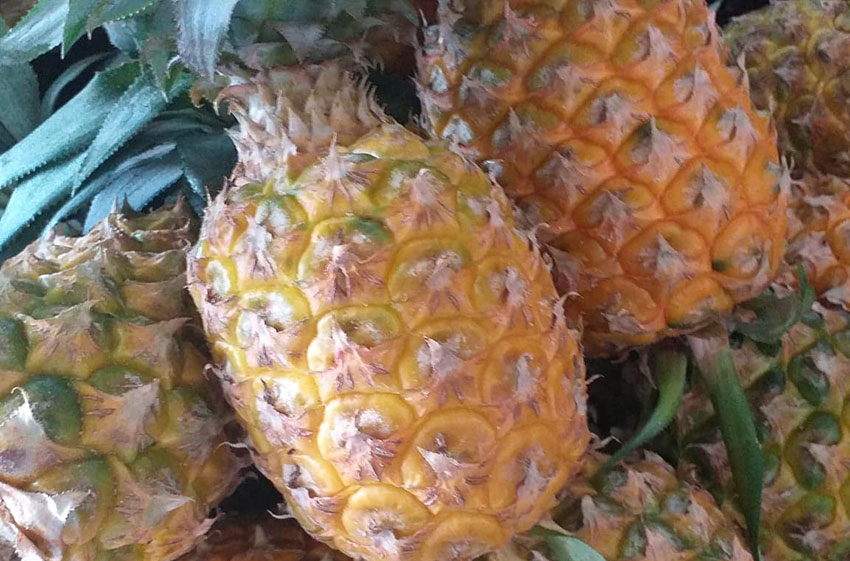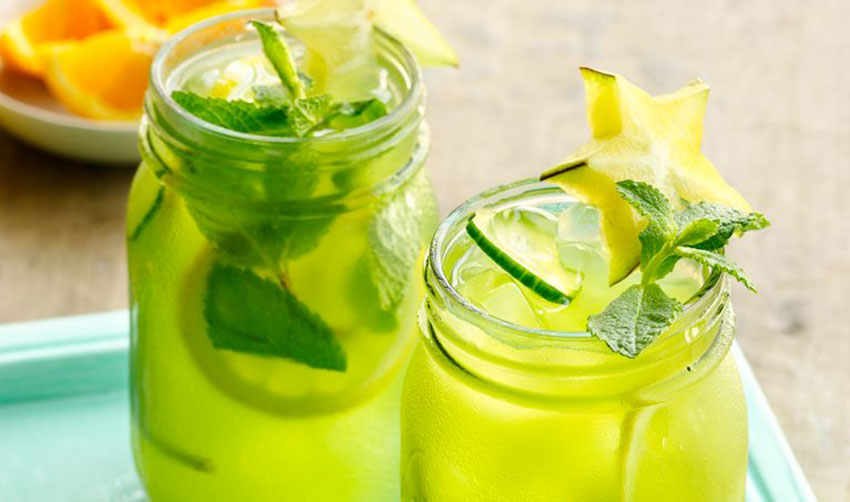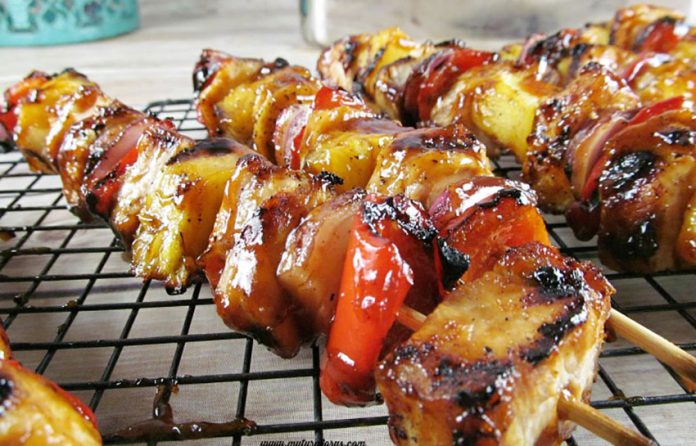For a while I lived along the coast in Nayarit, in a tiny pueblo of a few thousand people surrounded by literal jungle. That part of the state is an amazingly lush, tropical area and the climate makes it possible for an abundance of fruits to be cultivated: watermelon, mamey, pineapples, all kinds of citrus, the strange yaca (jackfruit), bananas, coconuts, soursop (guanábana), avocados. Moringa trees grow everywhere.
I learned to love the small, sweet “Honey Pineapples” — piña de miel — that grew in fields that stretched in every direction. This past week I was thrilled to see piles of them in the market here in Mazatlán: the season has begun!
Mexico is one of the top pineapple producers in the world, and Honey Pineapples are some of the sweetest, registering at 28 on the Brix scale of measurable sugar (as opposed to the common pineapple’s score of 19). They have a sweet, floral fragrance that’s hard to resist, and taste just like they smell – delicious!
Turns out pineapples have been revered throughout history. In Mexico, the Maya cultivated pineapples for hundreds of years, recognizing their natural anti-inflammatory properties for use in poultices and as a digestive aid. Culinary historians say the first European to taste one was Colombus, who recorded his delectable experience in 1493 after landing in the Caribbean.
In 1516, King Ferdinand of Spain said it was “the best thing he had ever tasted,” and in the 16th century the Spanish royal family’s steward wrote, “The pineapple appeals to every sense but that of hearing.” Exotic, expensive and hard to come by, it became a status symbol of wealth and privilege.

Pineapples are picked green and ripen as the starch in the leaves turns to sugar and spreads downward through the fruit, resulting in the trademark yellowish “glow” and sweet aroma.
They ripen easily at room temperature, and ideally should be eaten immediately. If you buy a pineapple already ripe, be prepared to eat it right away, especially if it’s been sitting out in a tienda or open-air stand. Depending on the degree of ripeness, they may last a day or two in the refrigerator.
Besides the classic piña colada and its valuable addition to fruit salad, fresh pineapple lends its tantalizing sweetness to all sorts of recipes. And baking or broiling – with ham, pork chops or by itself for a simple dessert with vanilla ice cream – brings out a rich, caramel flavor.
Agua de Piña, Pepino y Apio / Pineapple, Cucumber & Celery Drink
- 2 cups chunked pineapple
- 1 cup peeled and chunked cucumber
- 1 cup diced celery
- 2 Tbsp. lime juice
- Sugar to taste
- Optional: fresh mint or basil leaves
Put the pineapple, cucumber, celery, fresh herbs if using, and 2 cups of water in a blender. Blend well. Pour the liquid through a sieve to strain out the pulp, then pour into a large pitcher. Add 6 cups of water, the lime juice, and sugar. Mix well. Serve cold. Makes 2 quarts. – Mexconnect.com

Simple Pineapple Salsa
- 2 cups diced fresh pineapple
- 1 cup diced red pepper
- ½ cup chopped cilantro
- ¼ cup finely chopped red onion
- 3 Tbsp. minced jalapeno pepper, or to taste (stemmed and seeded)
- Juice of 1 large lime
- Pinch salt
Mix all ingredients together and refrigerate until serving.
Chicken Pineapple Kabobs
These kabobs can be grilled or baked.
- 3 Tbsp. soy sauce
- 2 Tbsp. rice vinegar
- 3 Tbsp. brown sugar (or grated piloncillo)
- 1 Tbsp. sesame oil
- 1 Tbsp. minced fresh ginger
- 1 Tbsp. minced fresh garlic
- 1 pineapple, cut into chunks
- 2 red or green bell peppers, cut into chunks
- 2 red or white onions, cut into eighths
- 15 cherry tomatoes or 4 tomatoes, cut into wedges
- Approximately 6 skinless, boneless chicken breasts, cut into 2-inch pieces (about 1 lb.)
- 2 Tbsp. cornstarch
- 1/3 cup water
- Bamboo skewers
In a shallow glass bowl, mix the soy sauce, brown sugar, rice vinegar, sesame oil, ginger and garlic. Separate into 2 bowls and marinate the chicken and pineapple separately, in the refrigerator, for 1 hour.
Discard chicken marinade. Remove pineapple from marinade; save liquid. To make basting sauce, use reserved pineapple marinade and add 1/3 cup water and cornstarch. Heat over low heat on stove, stirring constantly, until thickened, about 5 minutes; use to baste skewers as they cook.
Thread chicken, pineapple, peppers, tomatoes and onion alternately onto skewers. Bake in preheated 350-degree oven for about 20 minutes on foil-covered cookie sheet, turning once or twice and basting near end of cook time. Or preheat grill to medium-high and lightly oil grate. Grill 15 to 20 minutes, turning occasionally, or until chicken juices run clear. Baste during the last few minutes. Makes about 8 skewers, depending on size.
Pineapple Upside-Down Cake
- 1-1/3 cups flour
- ¾ cup sugar
- 2 tsp. baking powder
- ½ tsp. salt
- ¼ cup oil
- ½ cup milk
- 1 tsp. vanilla
- 1 egg
- ¼ cup unsalted butter
- ½ cup packed light brown sugar or grated piloncillo
- 7 slices fresh pineapple (about ¼ inch thick)
Preheat oven to 350 F. Whisk together flour, white sugar, baking powder and salt. Add oil and milk and beat with a mixer on medium until smooth. Beat in egg and vanilla. Melt butter in a 10-inch cast-iron skillet over medium heat. Add brown sugar and cook, stirring, until moistened. (If you don’t have a cast-iron pan, use a non-stick skillet to melt butter and cook brown sugar as directed, then transfer to a 9-inch cake pan for remainder of recipe.) Remove from heat; arrange pineapple on top. Pour batter evenly and carefully over top and smooth with a spatula. Bake until knife inserted in center comes out clean, 45-50 minutes. Let cool in pan 10 minutes, then run a knife around edge of cake and carefully invert onto a platter. – Martha Stewart
Janet Blaser of Mazatlán, Sinaloa, has been a writer, editor and storyteller her entire life and feels fortunate to write about great food, amazing places, fascinating people and unique events. Her work has appeared in numerous travel and expat publications as well as newspapers and magazines. Her first book, Why We Left: An Anthology of American Women Expats, is available on Amazon. Contact Janet or read her blog at whyweleftamerica.com.
